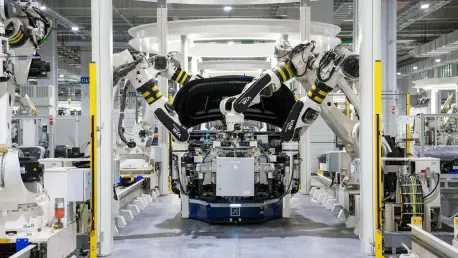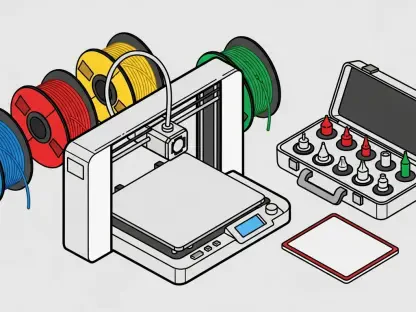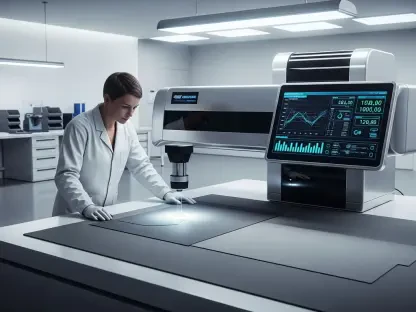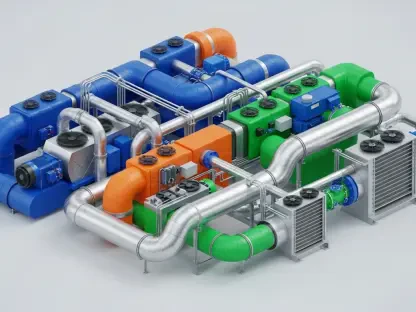The robotics industry is undergoing a profound transformation, with the Robot Operating System (ROS) emerging as a pivotal force in driving automation across multiple sectors globally. As industries grapple with the need for greater efficiency and adaptability in an increasingly competitive landscape, ROS stands out as a versatile platform that enables seamless integration of advanced technologies. From manufacturing floors to healthcare facilities, the demand for intelligent and collaborative robots is skyrocketing, fueled by the push for streamlined operations and innovative solutions. This surge is not just a passing trend but a fundamental shift in how automation is perceived and implemented, positioning ROS at the heart of a technological revolution that promises to reshape industrial capabilities over the next decade.
Driving Forces Behind ROS Adoption
Collaborative Robots and Industry Needs
The rapid rise in demand for collaborative robots, often referred to as cobots, is a significant driver propelling the ROS market forward. These robots are designed to work alongside humans in shared workspaces, particularly in industries like manufacturing, logistics, and e-commerce, where tasks such as material handling and order fulfillment require precision and flexibility. ROS provides the necessary framework for these robots to operate efficiently, enabling real-time communication and adaptability in dynamic environments. The e-commerce sector, in particular, has seen a dramatic uptick in robotic solutions as companies strive to meet consumer expectations for faster delivery times. By integrating ROS, businesses can optimize warehouse operations, ensuring that automation keeps pace with growing demands. This trend underscores the platform’s critical role in addressing modern industrial challenges, offering a scalable solution that enhances productivity while reducing operational bottlenecks.
Beyond cobots, the broader push for automation aligns with the principles of Industry 4.0, where interconnected systems and data-driven decision-making are paramount. ROS facilitates the integration of cutting-edge technologies like the Internet of Things (IoT), artificial intelligence (AI), and big data analytics, allowing robots to perform complex tasks such as predictive maintenance and intelligent workflow management. This convergence not only boosts operational efficiency but also provides a competitive edge to industries adopting these solutions. In sectors like healthcare, ROS-enabled robots assist in surgeries and patient care, demonstrating the platform’s versatility across diverse applications. As automation becomes increasingly integral to business strategies, the ability of ROS to support real-time monitoring and agile responses positions it as an indispensable tool for future-ready enterprises navigating the complexities of a digital era.
Technological Integration and Innovation
A key factor in the growing adoption of ROS is its compatibility with advanced technologies that are reshaping the robotics landscape. The platform’s ability to integrate with AI-driven tools, such as vision systems and force sensors, allows for the development of smarter robots capable of handling intricate tasks with precision. Manufacturers are leveraging these innovations to create modular robotic systems tailored to specific industrial needs, from assembly lines to quality control processes. This adaptability is particularly evident in the development of autonomous mobile robots, which rely on ROS to navigate complex environments and perform tasks independently. Such advancements highlight how the platform is not just a software solution but a foundation for building the next generation of intelligent automation systems that can evolve with changing demands.
Moreover, the integration of ROS with cloud robotics and predictive analytics is driving significant efficiency gains across industries. By enabling robots to access vast data sets and perform real-time analysis, companies can anticipate maintenance needs and optimize production schedules, minimizing downtime and costs. This is especially crucial in high-stakes sectors like automotive manufacturing, where precision and speed are non-negotiable. The shift toward data-driven robotics also supports the creation of interconnected factory settings, where machines communicate seamlessly to address operational challenges. As industries continue to prioritize scalability and innovation, the role of ROS in facilitating these technological synergies becomes increasingly vital. The platform’s open-source nature further encourages collaboration and experimentation, ensuring that it remains at the forefront of automation advancements through 2034.
Market Segments and Regional Insights
Key Segments Fueling Growth
One of the standout segments in the ROS market is articulated robots, which have demonstrated remarkable versatility in applications ranging from welding and painting to assembly and material handling. These robots, benefiting from ROS compatibility, offer cost-effective solutions that adapt to varying industrial requirements. Their dominance in the market is driven by enhanced capabilities, such as higher payload capacities and extended reach, making them ideal for large-scale manufacturing operations. With the addition of AI-driven features like vision tools and predictive analytics, articulated robots are becoming even more sophisticated, addressing specific needs with precision. This segment’s growth reflects the broader trend of industries seeking flexible automation solutions that can be customized to fit unique production challenges, ensuring that ROS remains a cornerstone of robotic innovation.
Another critical area of expansion is the automotive sector, where ROS-enabled robots are playing a pivotal role in processes like electric vehicle (EV) battery production and high-volume assembly. The sector is projected to achieve significant market value by 2034, driven by the need for precision in tasks such as sensor calibration and quality inspection. As the industry shifts toward electrification, suppliers are developing ROS 2-compliant systems to handle lightweight materials and multi-stage operations efficiently. This focus on automation not only improves production rates but also ensures compliance with stringent quality standards. The automotive industry’s reliance on ROS highlights the platform’s ability to support complex, high-stakes environments, paving the way for broader adoption in other precision-driven sectors over the coming years.
Regional Leadership in Robotics
The United States stands as a dominant force in the ROS market, with strong adoption across automotive, electronics, and logistics sectors. Valued at a substantial figure in recent assessments, the U.S. market benefits from robust partnerships and adherence to industry standards that foster innovation. The integration of ROS with cloud robotics and smart warehousing solutions has driven efficiency gains, particularly in logistics, where speed and accuracy are critical. This regional strength positions the U.S. as a hub for robotics advancements, with companies investing heavily in research and development to maintain a competitive edge. The focus on aligning ROS with emerging technologies ensures that the region remains a leader in shaping the global automation landscape through strategic collaborations and technological progress.
Additionally, the U.S. market’s growth is supported by a favorable ecosystem that encourages the adoption of intelligent automation solutions. The emphasis on AI coordination and data-driven robotics aligns with national priorities to enhance industrial competitiveness and operational agility. Key industry players are actively contributing to this momentum by developing ROS-compatible systems that address evolving demands, from scalable factory automation to advanced logistics frameworks. This regional dynamism not only reflects the transformative potential of ROS but also sets a benchmark for other markets aiming to capitalize on robotics innovation. As global industries look to replicate these successes, the U.S. experience offers valuable insights into building sustainable, technology-driven growth models that can withstand future challenges.
Reflecting on the Path Forward
Looking back, the journey of ROS in the robotics market reveals a remarkable evolution, as it transitioned from a niche software framework to a foundational platform for automation. Its ability to adapt to diverse industrial needs and integrate with groundbreaking technologies has been a game-changer, enabling efficiencies that were once unimaginable. The strides made in sectors like automotive and e-commerce underscore how ROS has redefined operational paradigms. Moving ahead, stakeholders should focus on fostering cross-industry collaborations to further enhance ROS capabilities, ensuring it meets the nuanced demands of emerging applications. Investing in talent and research will be crucial to sustain this momentum, while exploring new integration possibilities with AI and IoT could unlock untapped potential. As the robotics landscape continues to evolve, embracing these strategies will solidify ROS as a catalyst for innovation, guiding industries toward a more automated and interconnected future.









